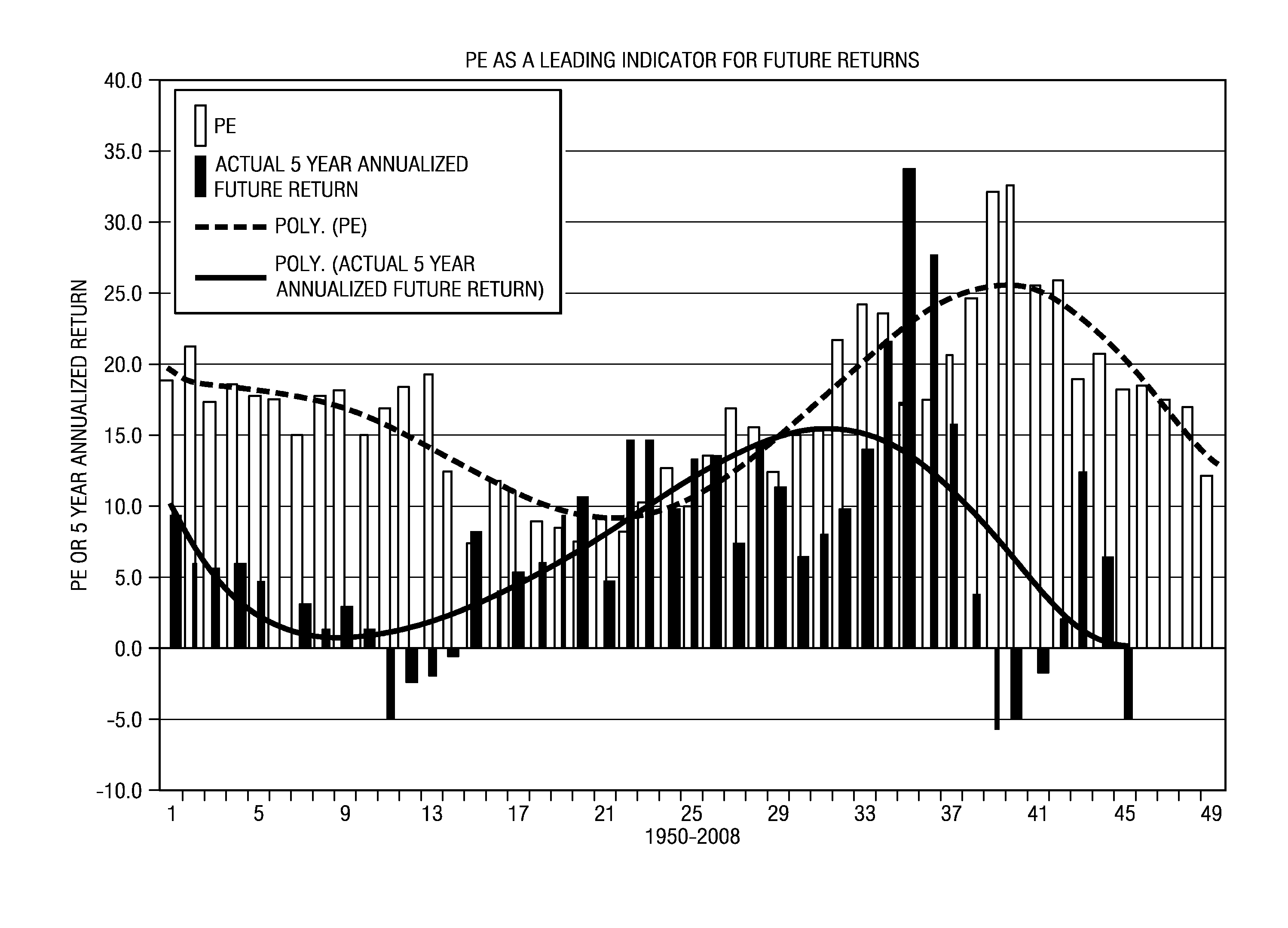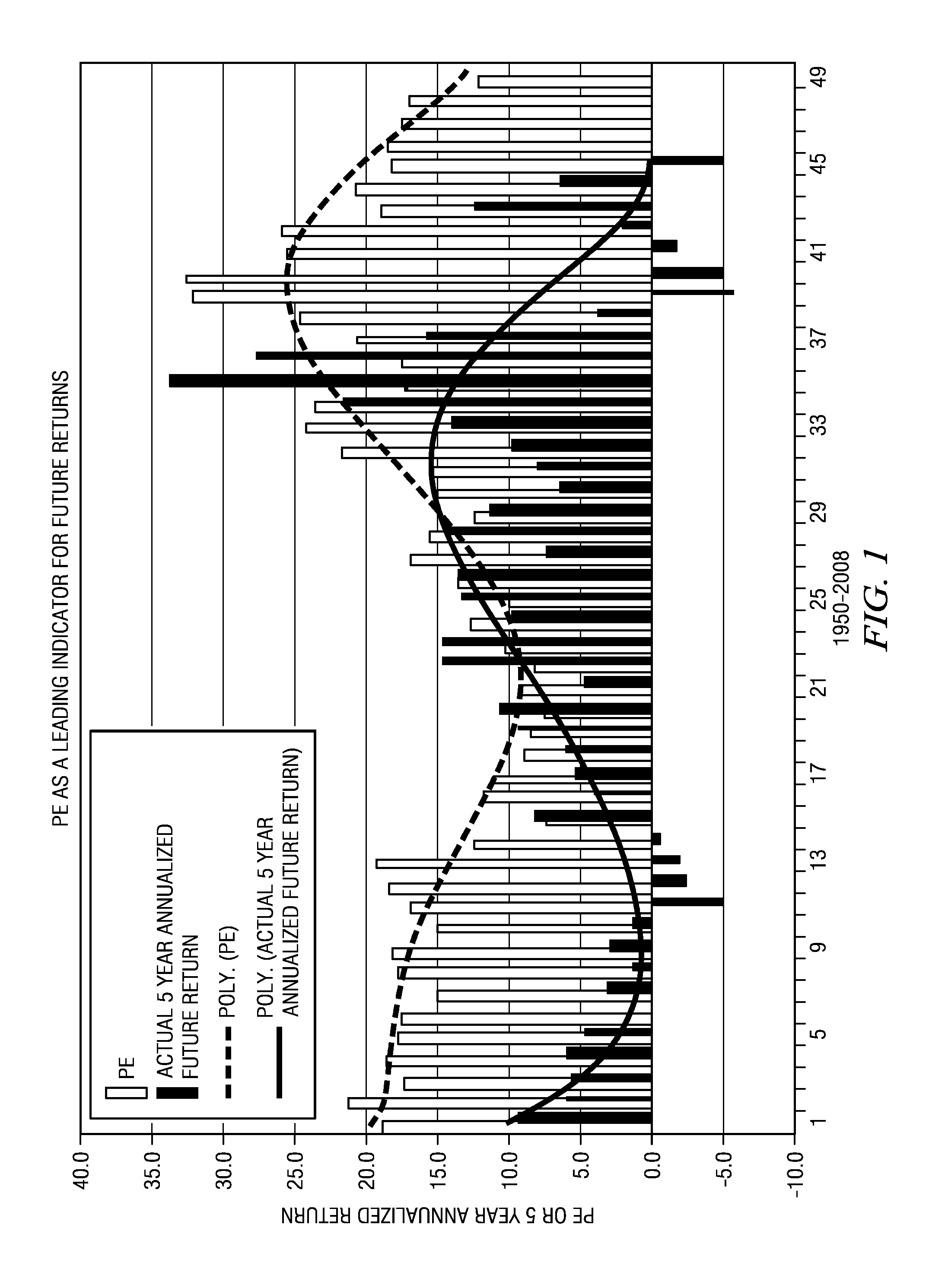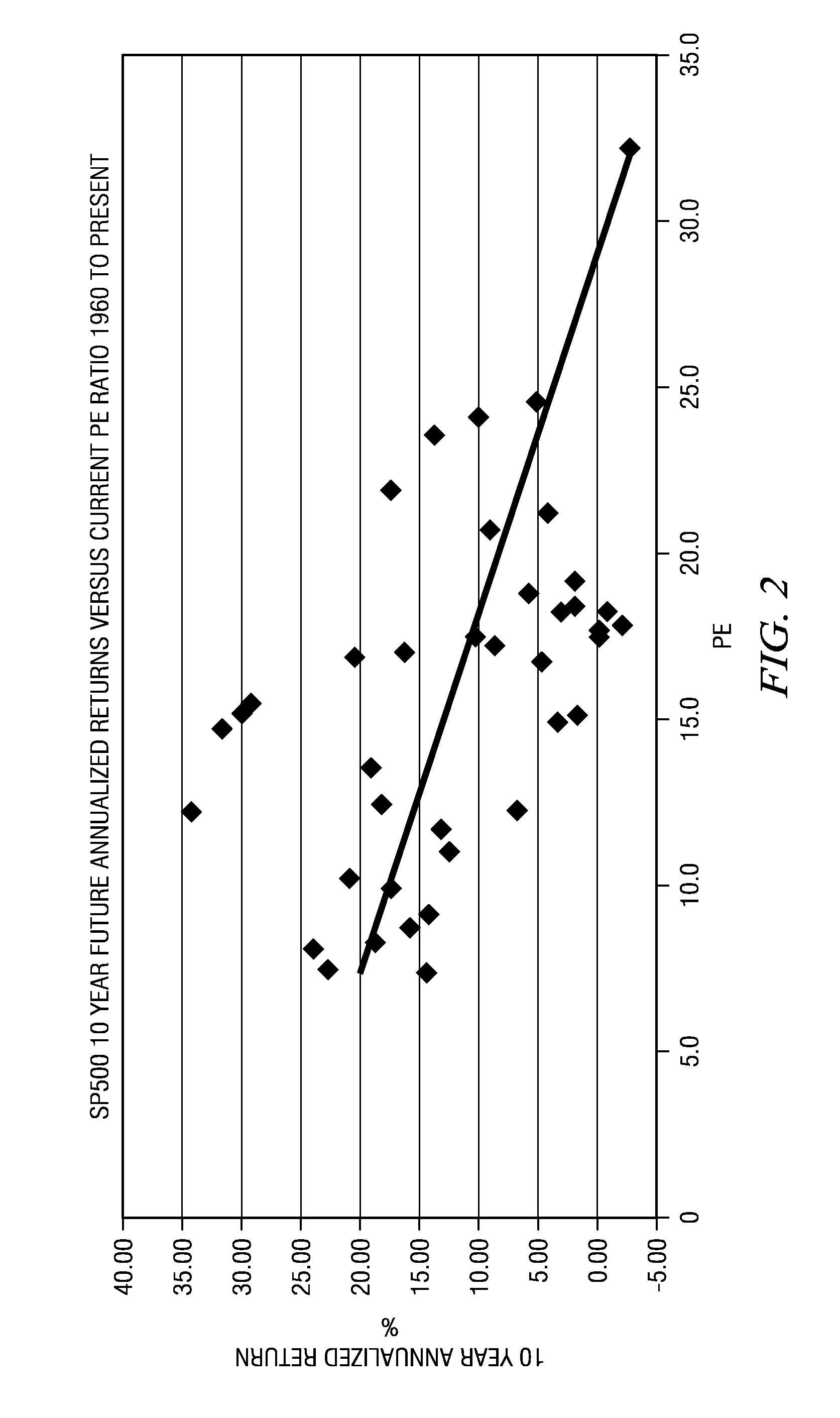Adaptive closed loop investment decision engine
- Summary
- Abstract
- Description
- Claims
- Application Information
AI Technical Summary
Benefits of technology
Problems solved by technology
Method used
Image
Examples
Embodiment Construction
_n">[0021]FIG. 5 is a scatter plot of the first derivative of the price of an asset to its near term continuation;
[0022]FIG. 6 is a scatter plot of one year returns as a function of mean deviation;
[0023]FIG. 7 is a graph illustrating probability distributions of future returns;
[0024]FIG. 8 is a table of outcome ranges corresponding to the ranges illustrated in FIG. 7;
[0025]FIG. 9 is a flowchart illustrating logic for implementing a trend engine and determining optimal values for parameters according to a method disclosed herein;
[0026]FIG. 10 is hysteresis logic table according to a method disclosed herein;
[0027]FIG. 11 is a flowchart illustrating computer logic for implementing a rotation engine according to a method disclosed herein;
[0028]FIG. 12 is a table illustrating a rotation matrix indicating the weighting attached to assets in a portfolio according to a method disclosed herein;
[0029]FIG. 13 is a flowchart illustrating logic for adjusting aggressiveness of asset allocation to...
PUM
 Login to View More
Login to View More Abstract
Description
Claims
Application Information
 Login to View More
Login to View More - R&D
- Intellectual Property
- Life Sciences
- Materials
- Tech Scout
- Unparalleled Data Quality
- Higher Quality Content
- 60% Fewer Hallucinations
Browse by: Latest US Patents, China's latest patents, Technical Efficacy Thesaurus, Application Domain, Technology Topic, Popular Technical Reports.
© 2025 PatSnap. All rights reserved.Legal|Privacy policy|Modern Slavery Act Transparency Statement|Sitemap|About US| Contact US: help@patsnap.com



